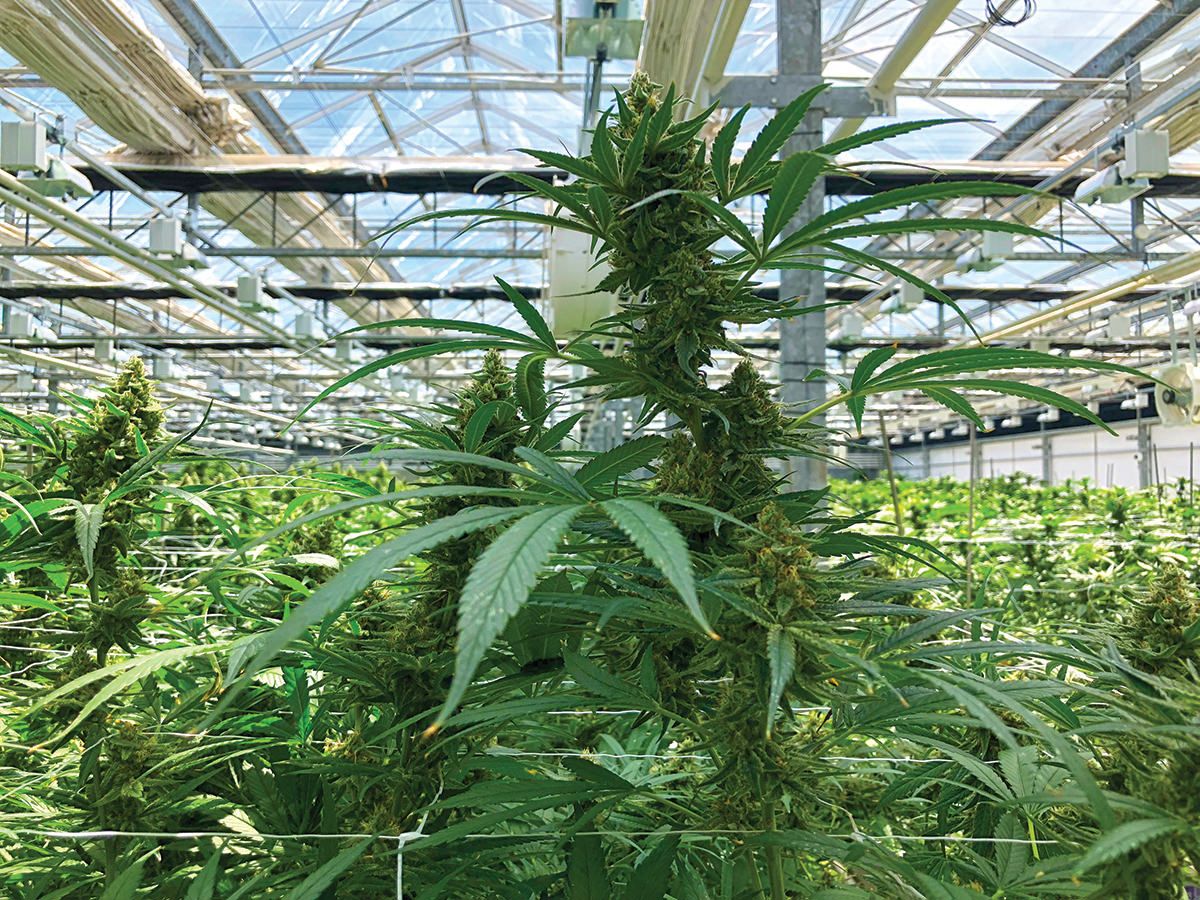Recent skepticism of the cannabis sector may be overblown, especially for companies that are fully funded – as highlighted by Aphria’s latest quarterly results.
While the market seems to have expected a guidance cut at Aphria, the company instead reported inline revenue for its fiscal first quarter – with surprise slight profitability – and reiterated its fiscal 2020 and long-term guidance.
A turn in sentiment would also mean that equity funding may be more readily available for the sector.
If Aphria executes, consensus estimates will have to rise, and rising estimates usually bring multiple expansions and capital to the entire sector.
But if the Leamington, Ontario, company cuts guidance in the next quarterly report, that would imply a huge turn in trend starting in the second half of October since we are exactly halfway through Aphria’s fiscal second quarter.
Aphria stock reacted favorably (up 23% in trading on the NYSE and 14% on the TSX) to the report, putting it back to the levels before the news of the Aleafia (TSX: ALEF) contract loss, and vertically integrated companies increased an average of 6.5%.
Aphria demonstrates how companies with strong liquidity and an experienced management team can overcome the recent challenges facing the sector. It currently has a CA$1.4 billion market cap and enterprise value (treating the convert as debt), putting it at 2.4X the midpoint of guided sales and 20.1X the guided F2020 EBITDA.
If we take the implied December 2020 run-rate floor of CA$165 million in EBITDA (outlined below), that would yield only an 8.5X EBITDA multiple, which is a normal EBITDA multiple for a mature business, let alone rapidly growing cannabis businesses.
Consensus has only CA$149 million of EBITDA for fiscal 2021 (17.5% margin on CA$853 million of revenue) for a multiple of 9.4X, so consensus remains skeptical and would have to increase should Aphria execute. For reference, Hain Celestial Group (Nasdaq: HAIN), a former company of Aphria CEO Irwin Simon, trades at 14.5X EBITDA.
Aphria reiterates guidance after inline quarter
Aphria reported a positive quarter with essentially inline results and reiterated guidance for CA$650 million-CA$700 million and adjusted EBITDA of CA$88 million-CA$95 million for fiscal 2020, which implies a margin of 13.5%.
Most importantly, Aphria did not cut its guidance, despite Toronto-based Aleafia’s lost sales contract (ALEF news release here; APHA news release here), as Aphria assumes that the revenue will be replaced by other customers at “better prices” – which could lead to net improvement to margins – assuming Aphria can execute.
“We expect to replace that with retail customers and other products to support those sales that we wouldn’t have got from Aleafia – and at better prices and better opportunities out there within both flower and oil prices,” Simon said on the conference call for Aphria’s earnings announcement.
Simon also reiterated the goal to have CA$1 billion of annualized revenue at current prices by the end of calendar 2020, and, “with that, margins will continue to improve.”
Implicitly, the margin on this CA$1 billion must be higher than the 16.5% guided for the balance of F2020. This would yield a run rate of at least CA$165 million on the CA$1 billion.
Consensus expectations remain skeptical, with F2020 revenue estimates sitting below the reiterated guidance at CA$635 million and only CA$562 for the three analysts who updated their estimates in October.
Consensus EBITDA is only CA$58 million and the margin only 9.1%. Consensus doesn’t have Aphria getting to over CA$1 billion of revenue until F2021 end May, so it is skeptical of the longer-term target as well.
First-quarter details
Revenue in the fiscal first quarter that ended in August was CA$126.1 million, below consensus of CA$131.3 million but termed “in line with their expectations” by Simon.
An Aug. 20 fire in the mother-plant rooms at Aphria’s Broken Coast facility took it offline for a few weeks and reduced revenue by CA$1.5 million in the quarter, so, arguably, revenue would have been CA$127.6 million. The site is back up and running and the company expects to make up the lost revenue in the balance of the year.
EBITDA actually beat consensus expectations at positive CA$1.0 million versus consensus at a CA$1.1 million loss.
APHA well-capitalized, high cash burn expected to slow
Aphria has a tremendous amount of cash and equivalents of CA$464.3 million and more than CA$500 million when a receivable from the Green Growth Brands settlement is included, which is “more than sufficient to fund previously announced capex, working capital and strategic investments,” CFO Carl Merton said.
The cash burn in the first quarter was especially high at CA$101.6 million, but this was impacted by some one-time items (CA$40 million, composed of CA$34.7 million in CC Pharma acquisition earnout and CA$5 million in debt paydown). Management noted that the cash burn should decline.
In addition, capital expenditures is expected to decline to CA$20 million-CA$25 million from CA$39.3 million, and the CA$15 million of working capital will also likely decline.
Thus, the cash burn is expected to be less than CA$47 million per quarter going forward, before any increases in EBITDA.
Conservatively assuming break-even EBITDA indefinitely (which we view as unrealistic) means Aphria has about 10 quarters worth of cash.
Other insights from the report and call Tuesday:
- Regarding the vape illnesses in the U.S., Simon noted that Aphria views this as an opportunity to highlight its focus on high-quality products and regulations to help the legal market gain share from the illicit market.
- Health Canada has expedited the issuance of the license for Aphria’s Diamond facility, which is fully constructed and ready to be operational.
- Cash cost per gram increased to CA$1.45 from CA$1.35, and the company noted this includes 20 Canadian cents per gram of temporarily increased costs driven by expanding mother plants for the Diamond expansion.
- After the expansion of concentrates in Canada, Aphria is modeling that flower will have 60% share, vapes will have 20% share and the remaining 20% will be split among other forms such as edibles and beverages.
- The guidance assumes market-share gains for Aphria, but more is expected from the illicit market, which is still 80% of the Canadian market.
- CFO Merton said the guidance of CA$650 million-CA$700 million includes distribution revenue being “slightly more than half the total net revenue.”
- At current prices, the planned capacity in full-crop rotation would yield CA$500 million annually in Canadian cannabis sales.
Mike Regan can be reached at miker@mjbizdaily.com.




